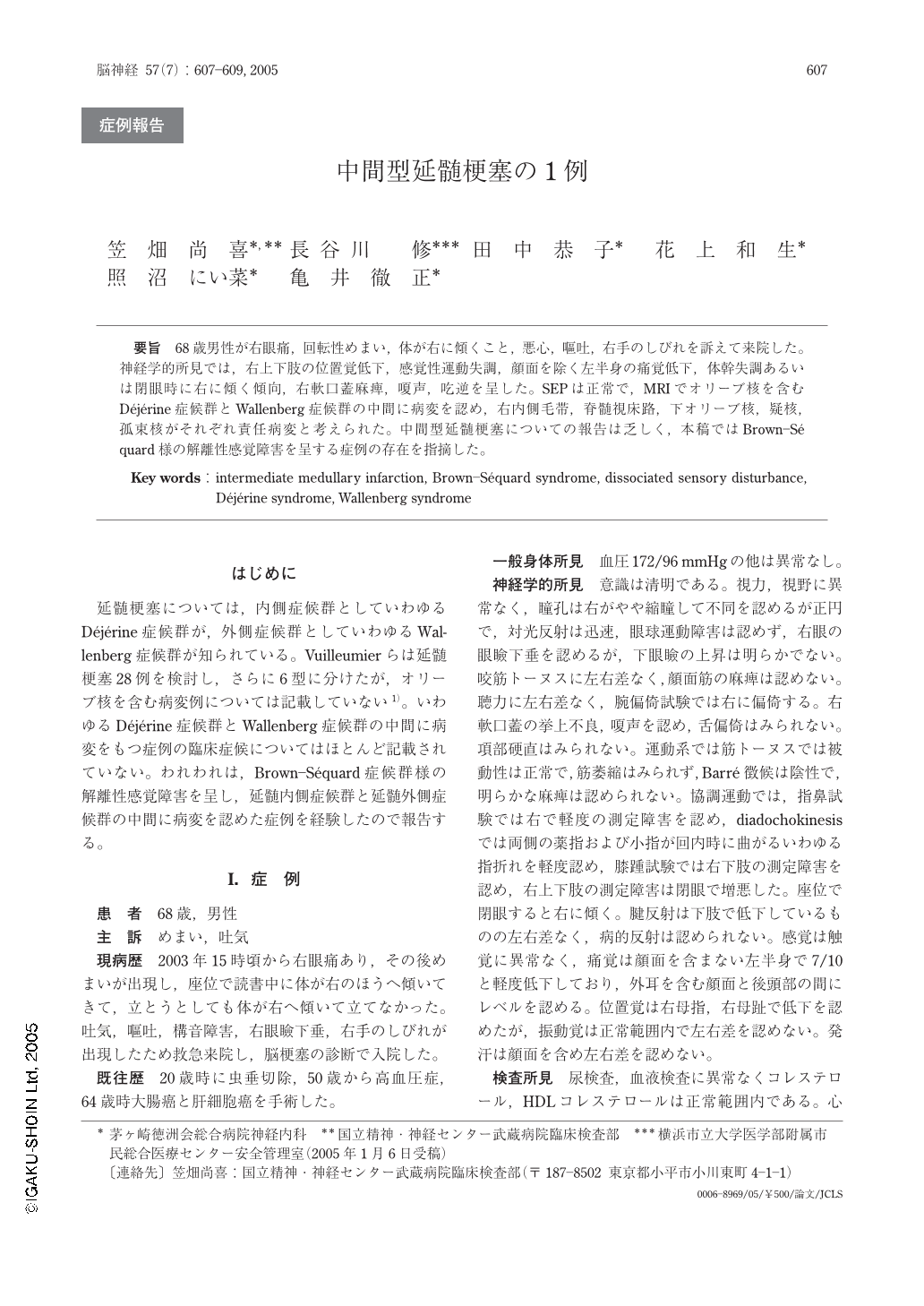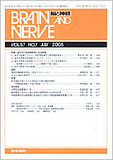Japanese
English
- 有料閲覧
- Abstract 文献概要
- 1ページ目 Look Inside
要旨 68歳男性が右眼痛,回転性めまい,体が右に傾くこと,悪心,嘔吐,右手のしびれを訴えて来院した。神経学的所見では,右上下肢の位置覚低下,感覚性運動失調,顔面を除く左半身の痛覚低下,体幹失調あるいは閉眼時に右に傾く傾向,右軟口蓋麻痺,嗄声,吃逆を呈した。SEPは正常で,MRIでオリーブ核を含むDéjérine症候群とWallenberg症候群の中間に病変を認め,右内側毛帯,脊髄視床路,下オリーブ核,疑核,孤束核がそれぞれ責任病変と考えられた。中間型延髄梗塞についての報告は乏しく,本稿ではBrown-Séquard様の解離性感覚障害を呈する症例の存在を指摘した。
A 68-year-old man presented with right eye pain and vertigo. Thereafter, he gradually leaned rightward, then laid down. He felt nausea and vomited. His right upper eyelid drooped and he felt dysethesia of the right hand. On neurological examination, ptosis of his right eye with slightly miotic right pupil, paresis of the right soft palate and hoarseness were noted. Arm deviation test demonstrated rightward deviation. He presented sensory ataxia of the right upper and lower extremities : finger nose test showed mild dysmetria of the right upper extremity, heel knee test demonstrated dysmetria of right lower extremity and these findings worsened when he closed his eyes. He showed mild bending of his bilateral ring and little fingers when he did rapid alternative movement. He leaned rightward when he sat and closed his eyes. Position sense of his right upper and lower extremities was decreased and sometimes he could not answer correctly when asked on which direction his finger pointed. Pinprick sensation was mildly decreased on the left side not including the face. Touch and vibration sense were normal. SEP findings on upper and lower extremity stimulation were normal. MRI of the brain showed T2 high intensity and partially T1 low intensity lesion at the right medulla (Figure). MR angiography showed no apparent lesion of major arteries such as dissection of the vertebral arteries. He complained and presented with hiccup initially.
On MRI, the lesion was thought to involve the spinothalamic tract, medial lemniscus and inferior olivary nucleus. Ambiguus nucleus was in the lesion and solitary nucleus near the lesion. There is no report that seems to describe clinical features of a lesion like that in this case. Intermediate medullary infarction may present dissociated sensory disturbance like Brown-Séquard syndrome and position sensory disturbance without disturbance of vibration sense.
(Received : January 6, 2005)

Copyright © 2005, Igaku-Shoin Ltd. All rights reserved.


